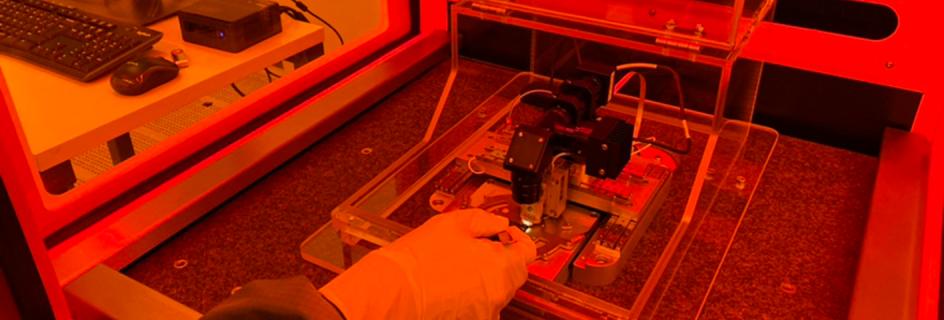Post date:
The tool will allow researchers and industrial clients to perform rapid prototyping at the nano-metric scale in real-time.
The tool is a thermal scanning probe lithography (t-SPL) machine capable of producing features as small as four nanometres (nm). One nanometre is a thousand-millionth of a meter. The tool uses an Atomic Force Microscope (AFM) style tip, which is heated up to vaporise a deposited substance known as ‘resist’ in order to form patterns on the substrate. The patterns generated can then be transferred into a substrate using lift-off and etching techniques, for the fabrication of advanced devices.
The t-SPL machine brings a low-cost nano-meter scale lithographic alternative to electron-beam (e-beam) lithography which, coupled with the SMC’s maskless lithography system (DMO MicroWriter ML3) and conventional mask aligner, provides a unique lithographic toolset capability.
Professor Rebecca Cheung, Head of IMNS, said “The new acquisition is an exciting opportunity for IMNS to integrate our existing micro-scale capability with the newly acquired nano-scale fabrication technology. The move will extend current research in graphene, two-dimensional materials and nanowires, as well as open up new avenues of research with applications in, for example, biomedical, biomimetic, quantum and energy.”
Watch a video of the tool in action:
The 3D video shows a grey-scale image of the SMC's Install Team that has been printed by the t-SPL tool in real-time. The image has been printed into a 30 micron x 22 micron frame with around 100nm (nanometre) depth, the size of which is similar to the diameter of a human hair. The whole image can fit onto the tip of a pin.
To find out more, contact Dr Peter Lomax.



